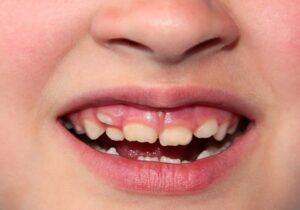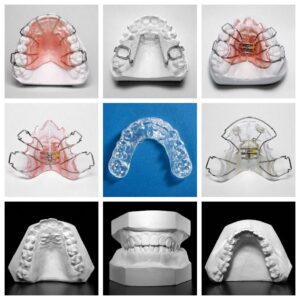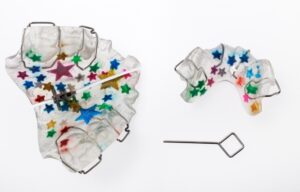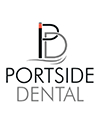Home > Our Services > Orthodontics


As the name suggests, Early Intervention or Interceptive Orthodontics is treatment that aims to direct a child’s growth and development in order to correct or prevent certain kinds of orthodontic problems.
By undertaking treatment early, the goal is to reduce the need for treatment later, particularly aiming to avoid the need for tooth extractions where possible.
Early Intervention/Interception Orthodontic treatment can start as early as 6 years old up to approximately 11 or 12, when there is a mixture of baby and adult teeth.
How does Early Treatment Work?
Depending on the scenario, there are different types of removable expansion plates and appliances that are used to gently guide the growth of the jaw and guide incoming permanent teeth into a better position.
Often this treatment will take advantage of the early growth spurt, taking a difficult orthodontic problem and making it into a more manageable one.
Why would we act Sooner rather than Later?
Early treatment, when necessary and conservative, can lead to faster, simpler, more predictable and successful later treatment.
Early Treatment Benefits Include:
- Avoid the need for permanent tooth extractions
- Gain space for permanent teeth
- Guide permanent teeth into a more favourable position
- Guide jaw growth to create facial symmetry
- Improve the way lips meet
- Reduce likelihood of impacted permanent teeth
- Correct thumb-sucking
- Eliminate abnormal swallowing or speech problems.
- Regaining spaces where baby teeth were lost/ extracted and the adjacent teeth have drifted into the site.
Will I Still need Braces Later?
Most early treatments require a simple second phase of treatment when all the adult teeth are present to achieve the final bite, with either Invisalign or Fixed braces age 12-14 years onwards. In some cases, the orthodontic problem will have been resolved in early intervention treatment so further treatment is not needed.
Shall I just Watch and Wait until all Adult Teeth are Present?
There used to be a general belief that children should only begin orthodontic treatment between the ages of 12 to 14 years, when all the adult teeth have erupted.
Correction of crowding at this stage is limited to only mechanical forces, therefore adult teeth could require extractions due the lack of space in the mouth.
In cases like a severe underbite or overbite, when the face and jaw are fully developed, it’s much harder to get dramatic results and waiting until adulthood could mean surgery is required. With early orthodontic treatment, we’re intercepting and correcting the issue before it has a chance to become a full blown problem.
Why are My Child’s Teeth Crowded, or in the Wrong Position?
Numerous studies have shown that in most cases, crowding in children is due to harmful oral habits or conditions which impact bone or skeletal development.


Such Habits/Conditions Include:
- Mouth breathing
- Poor tongue posture
- Blocked airways/ nasal passages
- Enlarged tonsils and/or adenoids – leading to poor nasal breathing
- Chronic allergies, allergic rhinitis, seasonal allergies that are not well managed.
- Tongue thrust (forward tongue position when swallowing)
- Thumb sucking or prolonged dummy use
- Incompetent lip seal (open lips at rest)
These habits can result in narrow jaws, which means less space for developing adult teeth and therefore crowding.
Interceptive orthodontics aims to develop the face and jaw correctly by creating more room for the adult teeth to grow into.


My Child is Grinding their Teeth at Night, Is this Normal?
Grinding teeth during sleep can be a sign of an upper airway obstruction called Sleep Disordered Breathing (SDB). SDB is a form of Obstructive Sleep Apnoea (OSA) Syndrome, which is a common problem affecting the general health of children.
Your child’s teeth will look worn down because of night-time grinding or they may complain they feel more sensitive when they eat hot and cold foods.
They are also more likely to bite the inside of their cheeks, and you may notice they have narrower dental arches, and a lack of space for developing adult teeth.
Quite often tooth grinding in young children can indicate a need to expand the upper arch as part of Early Intervention Orthodontic treatment.
If Left Untreated:
Teeth grinding can significantly wear down teeth, causing a loss of height between the upper and lower jaw.
This can put the jaw in the incorrect position and lead to abnormal tongue swallowing or thrusting patterns.
Untreated SDB can also Cause Symptoms other than Grinding which Include:
- Bedwetting
- Behavioural problems similar to ADHD and ADD
- Daytime sleepiness
- General failure to thrive
- Poor concentration, memory, focus
- Poor mental /physical stamina
In more advanced cases, untreated SDB may lead to more serious health problems such as cardiac complications and diabetes.
My Child Often has Ear Infections, Is this Related?
Young children can frequently suffer from ear problems, where the middle ear becomes inflamed, which is a condition called “otitis media”. This can be associated with learning difficulties, hearing loss and secondary nervous system complications.
It’s quite common for patients with middle ear dysfunction to have dental disorders; this may be caused by an incorrect dental bite (deep bite, overbite) and is why it’s important to book a dental examination if your child frequently has ear infections. It’s possible for teeth grinding to put pressure on the jaw (temporomandibular) joints which can lead to these joints becoming inflamed. This in turn can increase the risk of ear infections.
What do Expansion Plates Look Like?
Each expansion plate or appliance will be designed specifically to the case, but below is an idea of their appearance.
At Portside Dental, we love to make things a little more fun and unique for our children, so each plate can be custom designed by your child’s imagination, adding pops of colour, sparkles, emojis and even pictures of their favourite pets!





